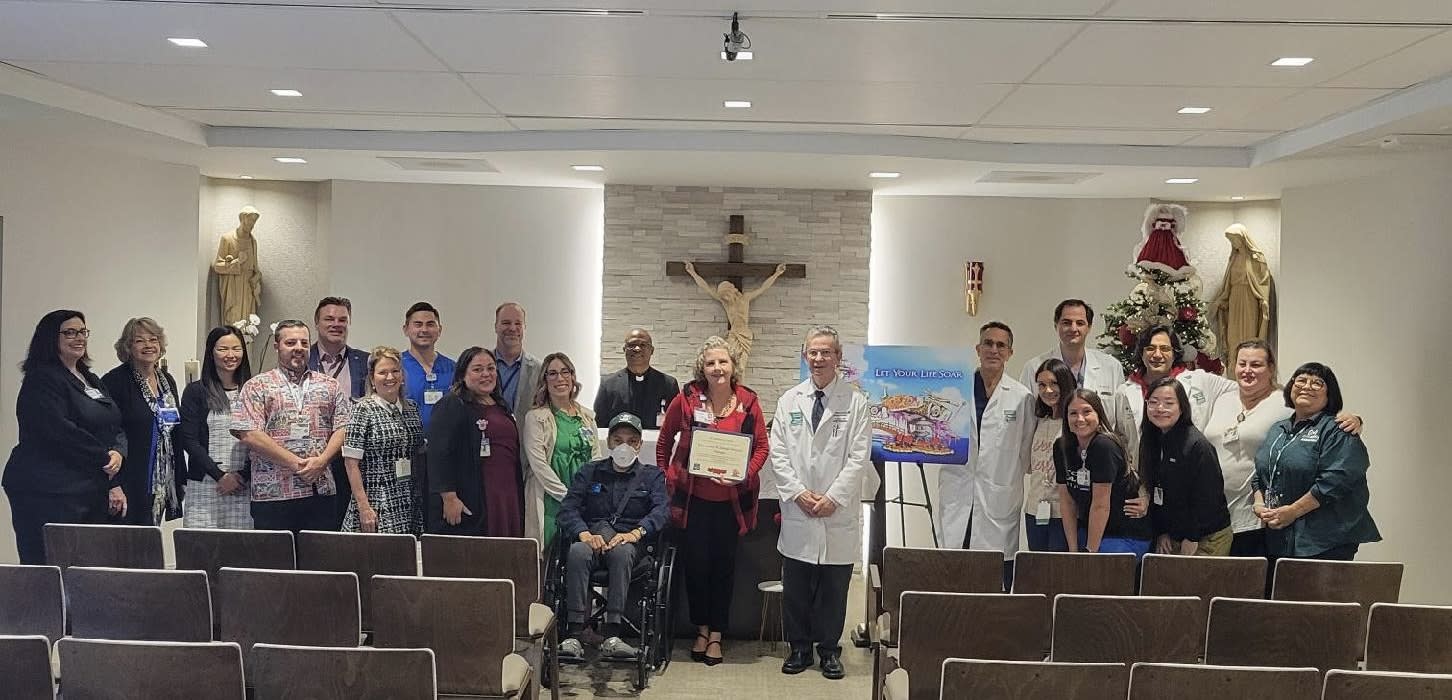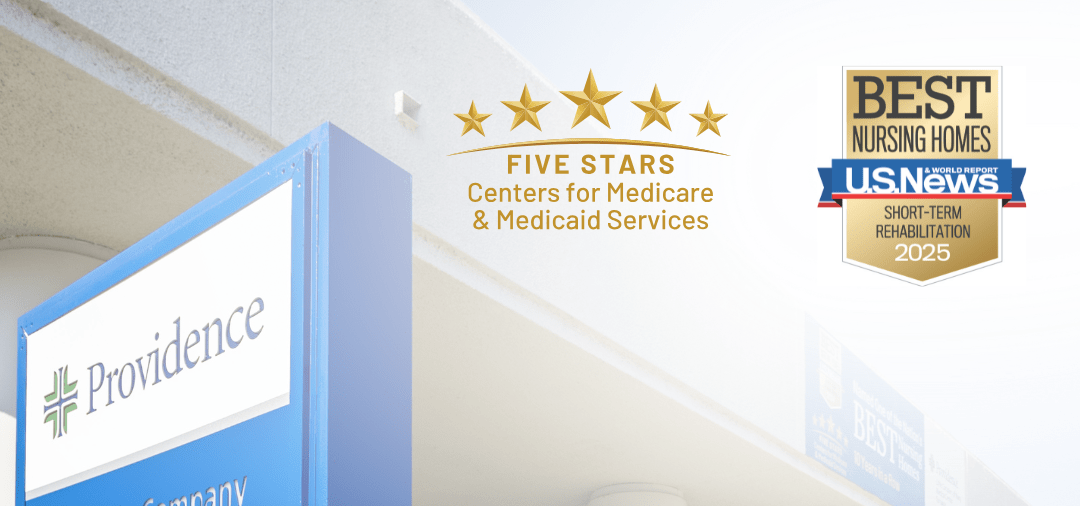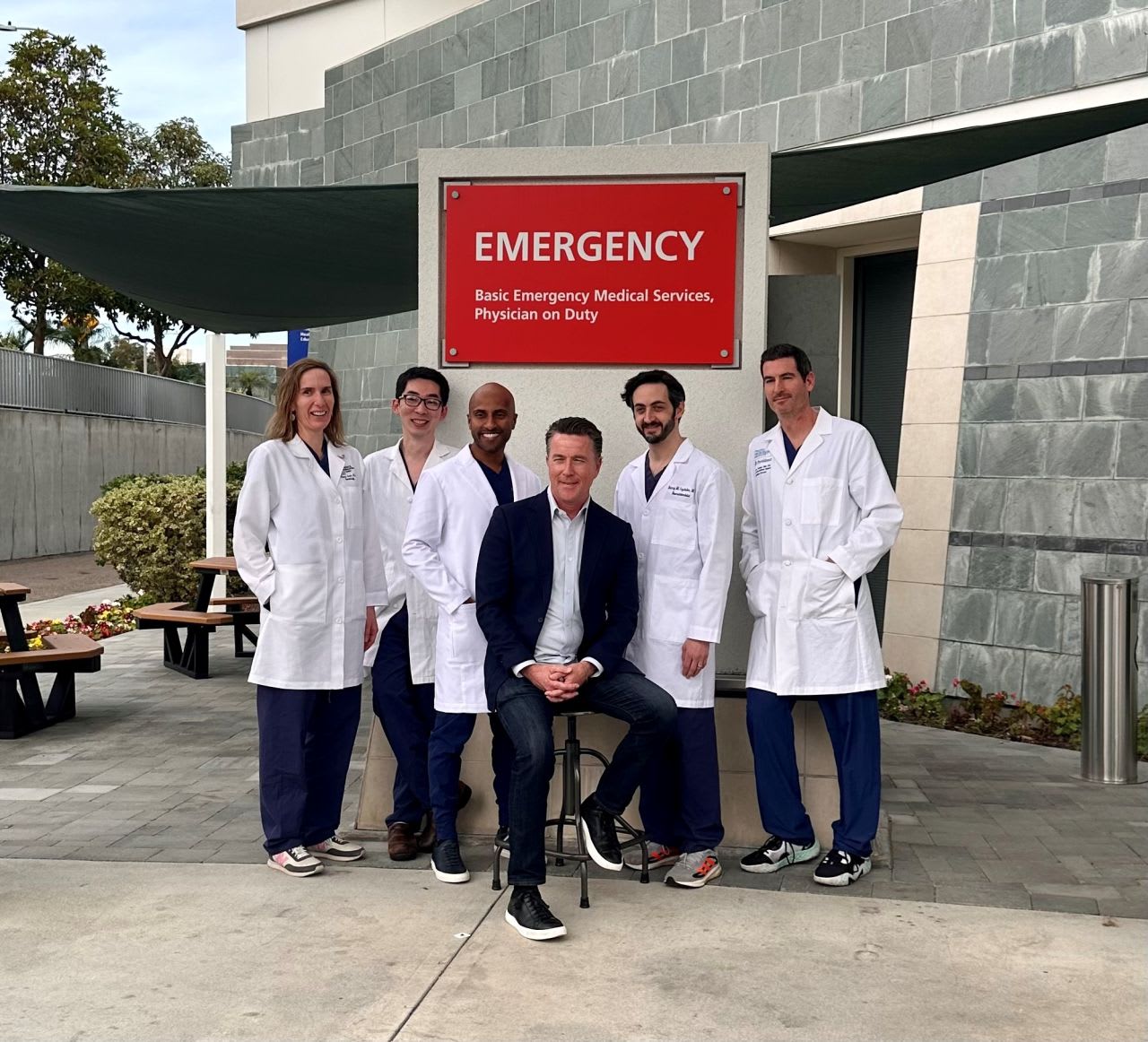A Team Dedicated to Recovery
A heroic response by the ER team saved Boyd Jeffery after a stroke, but it was the specialists at the acute rehab unit who gave him his life back.
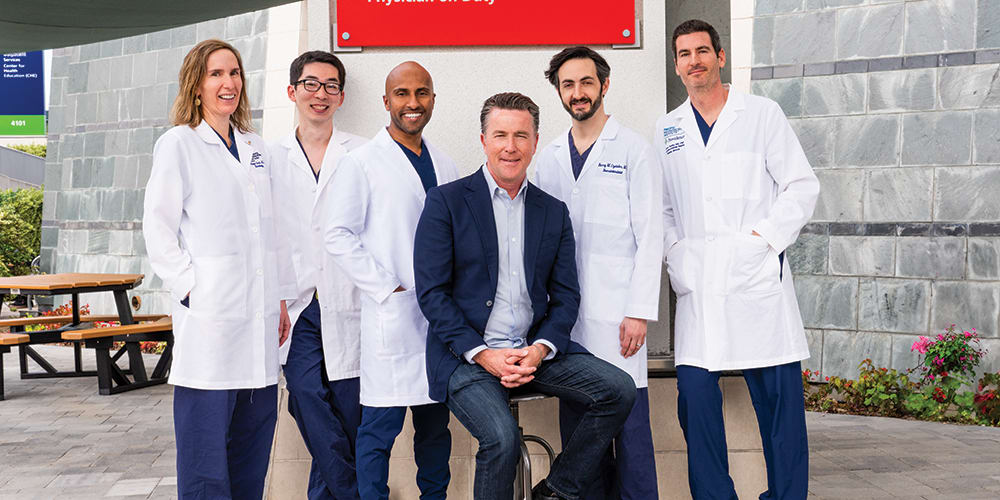 Boyd E. Jeffery, an energetic 54-year-old Manhattan Beach real estate agent known on social media as Boyd the Broker, had a hemorrhagic stroke in December 2021. He says the care he received at Providence Little Company of Mary “clearly saved my life.”
Boyd E. Jeffery, an energetic 54-year-old Manhattan Beach real estate agent known on social media as Boyd the Broker, had a hemorrhagic stroke in December 2021. He says the care he received at Providence Little Company of Mary “clearly saved my life.”
Boyd’s Monday morning had started routinely enough. He dropped off his 15-year-old son, Kai, at school. But within an hour, Boyd recalls, “I started to get a knife-like pain in the back of my neck.” When he described his pain and dizziness to his wife, Xiomara, she urged him to call 911. The ambulance arrived just as Boyd lost consciousness.
He was rushed to the comprehensive stroke care center at Providence Little Company of Mary Torrance, where the center’s medical director, stroke neurologist Allison Arch, M.D., and her team were waiting for him. When it was clear from a CT scan that Boyd had bleeding in the brain, neurosurgeon Jian Guan, M.D., performed surgery to relieve the pressure that was causing his symptoms and threatening his life. Later, neurosurgeon Walavan Sivakumar, M.D., performed a second surgery to place a temporary drain to control Boyd’s intracranial pressure.
When a patient with a suspected stroke is brought into a stroke center’s emergency department, the first step is to determine what type of stroke the person is experiencing. Eighty-five percent of strokes are ischemic, in which oxygen isn’t getting to parts of the brain because there’s a blockage, usually a blood clot. Less common is the type Boyd had, a hemorrhagic stroke, which is caused by a rupture of a blood vessel in the brain.
Providence Little Company of Mary in Torrance received its accreditation as a comprehensive stroke care center in 2018. The fast, responsive stroke team now consists of three neurologists, two neurointerventional radiologists, three neurosurgeons and two neurocritical care physicians, plus a dedicated stroke-trained nursing staff.
Although the work is intense and demanding, Dr. Arch says her team is inspired daily by its patients. “With stroke care, you can make such a difference in the patient’s future quality of life,” she says. “We see great outcomes a lot. That’s extremely rewarding.”
HALF THE BATTLE
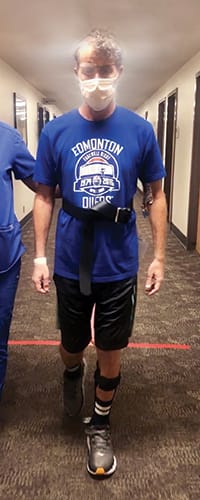 As fortunate as Boyd was to survive a hemorrhagic stroke (most people don’t), he still had a long road ahead of him to overcome the paralysis that had left him unable to care for himself, move independently, talk or swallow. When he was able to leave the hospital, he was transferred to the care of Houng-Ahn Long, M.D., who heads the nationally recognized acute rehabilitation unit (ARU) at Little Company of Mary in San Pedro. “we have a tight-knit team who are passionate about what they do,” says Dr. Long. “The strength of the program is that we develop a close relationship with patients while working with them on state-of-the-art equipment.”
As fortunate as Boyd was to survive a hemorrhagic stroke (most people don’t), he still had a long road ahead of him to overcome the paralysis that had left him unable to care for himself, move independently, talk or swallow. When he was able to leave the hospital, he was transferred to the care of Houng-Ahn Long, M.D., who heads the nationally recognized acute rehabilitation unit (ARU) at Little Company of Mary in San Pedro. “we have a tight-knit team who are passionate about what they do,” says Dr. Long. “The strength of the program is that we develop a close relationship with patients while working with them on state-of-the-art equipment.”
Katie Richardson, an occupational therapist and one of the rehabilitation therapy supervisors at the ARU, explains that to be admitted to the facility, a patient needs to be able to participate in three hours of therapy a day, five days a week, with the ARU’s physical and occupational therapists and speech pathologists. In Boyd’s case, Richardson says, he was so debilitated from 19 days bedbound in the intensive care unit that they had to modify his schedule to include frequent rest breaks. “We utilized our brain-injury protocol with frequent breaks, both physically and mentally,” Richardson explains, “to promote healing and improve his functional outcomes.”
Many of the ARU’s therapists have additional training specific to stroke rehab. “A lot of our therapists have advanced specialties,” Richardson says, “such as neuro, low vision, driving rehab and cognitive therapy.” Stroke survivors constitute the majority of the ARU’s patients, but the unit also serves people with other kinds of brain injury, complex joint replacements, organ transplants, amputations, spinal cord injury and multiple trauma from accidents.
Most patients stay 10 to 14 days, although Boyd arrived on Christmas Day and left on January 12. At that point, he was reliant on a walker, a big improvement over his bedridden condition on arrival. “My recovery in the ARU was the first step to living again,” says Boyd. “Not getting my old life back—that is gone after suffering a major stroke. But your new life is right in front of you and you are in control of where it goes. Along the way you need direction, and that is what the staff at ARU helps you with. They showed me patience, direction and encouragement.”
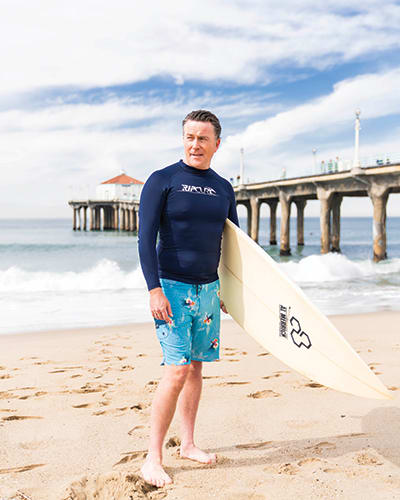 Having been an avid amateur athlete, Boyd was determined to recover. “Once you are given the opportunity to recover,” he says, “it is up to you where you take it, and I chose to use all the care I received from the acute rehab center to start a new productive and fulfilling life.” It took three more months of intensive outpatient therapy for Boyd to return to his previous life as a real estate agent, husband and father. “You have to keep your eyes on the prize, and my prize was my wife and son,” he says.
Having been an avid amateur athlete, Boyd was determined to recover. “Once you are given the opportunity to recover,” he says, “it is up to you where you take it, and I chose to use all the care I received from the acute rehab center to start a new productive and fulfilling life.” It took three more months of intensive outpatient therapy for Boyd to return to his previous life as a real estate agent, husband and father. “You have to keep your eyes on the prize, and my prize was my wife and son,” he says.
Boyd has since returned to the ARU to visit with patients. “Now I have the unique capability to inspire others and help those recovering from their own brain traumas,” he says.
For more information on Providence Little Company of Mary hospitals, call 844-925-0942.
